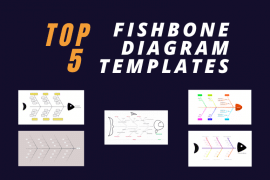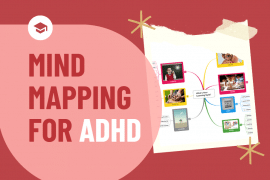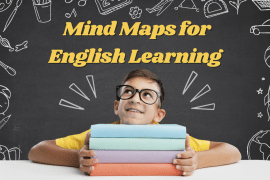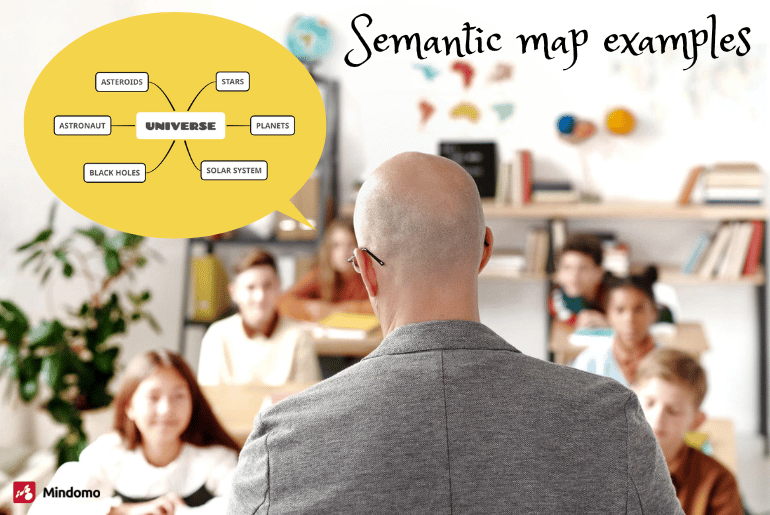
In the previous article, you found out what semantic maps are and when you should use them. Now we’ll talk about specific examples of semantic maps.
A focused mind map diagram
Just to recall, a semantic map is about organizing and structuring words and phrases. They are a more refined version of mind maps.
Mind maps work as a visual display for any context, especially for those that are starting businesses. They are primarily used in business as a type of graphic organizer. It’s a type of visual strategy to represent complex thoughts and processes. Semantic maps are one of many types of mind map examples.
Creating a semantic map is similar to how we create mind maps. Again it’s about taking that core vague word and comparing and contrasting it. It’s about building out concept maps with words. It helps to have prior knowledge of the field or topic. Sometimes these are also known as webs of words. Regardless of what they are, we’re going to create a semantic map or three to showcase how easy it is.
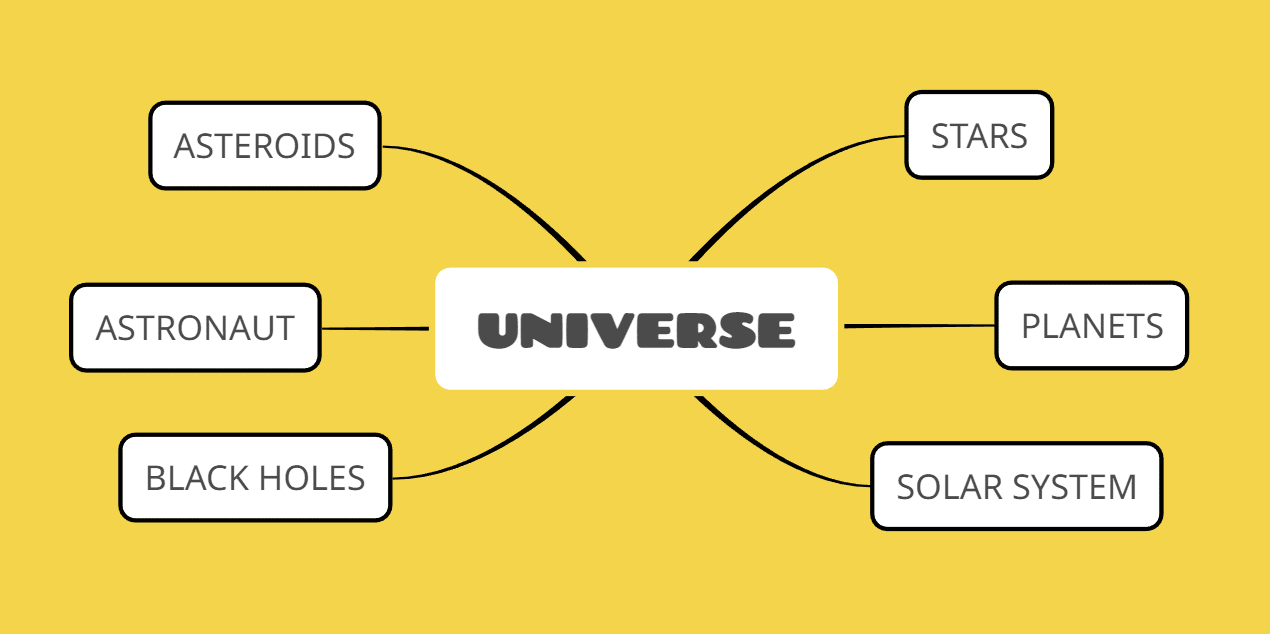
Why are semantic map examples important?
When it comes to teaching strategies, becoming an expert in mind maps and semantic maps is a must. Having a step-by-step system to create a semantic map or any type of visual display helps with efficiency. Graph organizers or software can be used properly when understanding how these concept maps are formed.
Keep in mind that, at first, it may seem simple, but examples of semantic maps can easily get quite complex. You can look at these bubble maps, and then you see the depth that is behind them. It’s extremely useful with difficult scientific words that are hard to remember or relate to. As graphic organizers come, a semantic map helps the best in these situations.
Bubble Map
The first example is creating a semantic map known as a bubble map. This is where all the bubbles around it are related to the world in the center. The word in the center is a noun (person, place, thing, or idea).
Then the surrounding words are ways to describe it. These words compare and contrast the noun in the middle. In this situation and example, we’re going to provide a visual display for dogs.
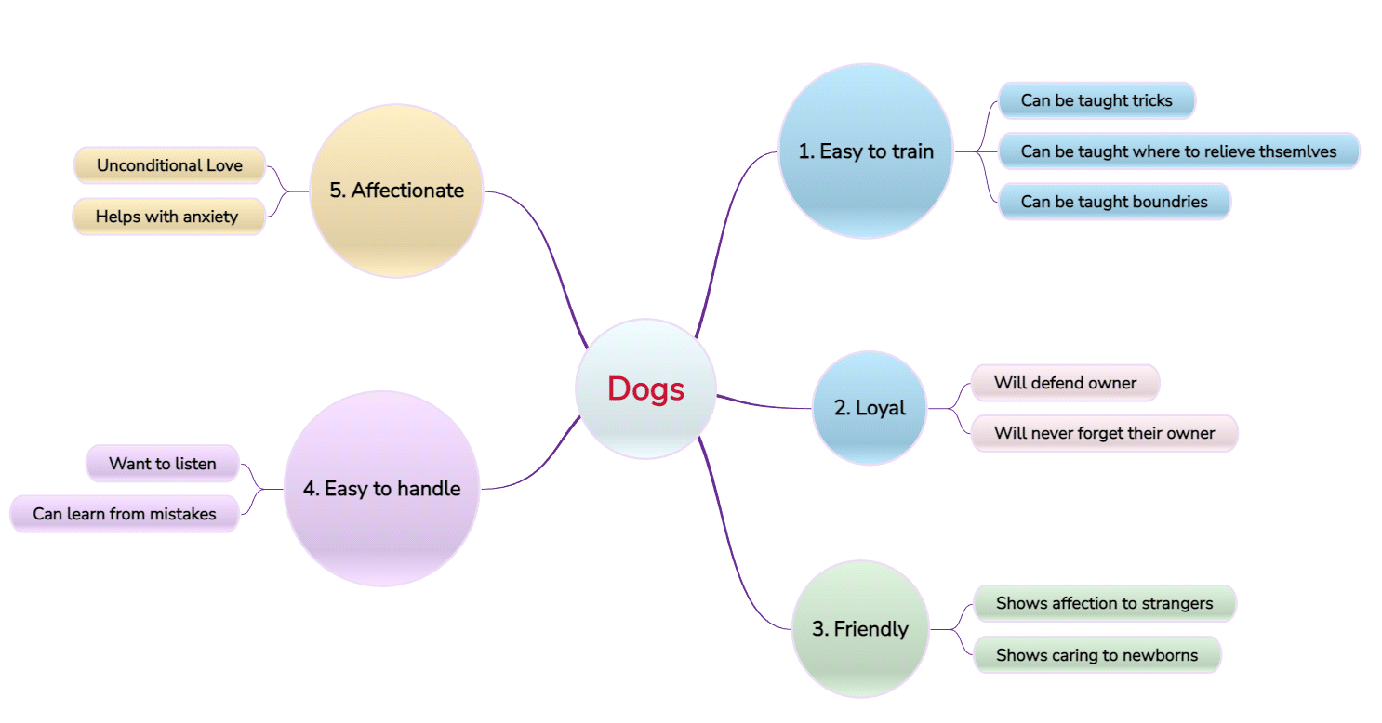
As you can easily see from this example mind maps, it’s easy to do and relate to. But, of course, this is a simplistic example meant to illustrate a point.
Venn Diagrams
You may have come across Venn Diagrams and probably didn’t know these were classic mind maps examples. Take your prior knowledge of Venn diagrams and now see how this is an excellent example of graphic organizers. Venn diagrams are best used as a way to explore two opposed or similar ideas.
Whatever crosses over in the middle is that sweet spot. You can see a classic example below for careers. Keep in mind that it is meant to express what to look for in an ideal job versus a specific one.
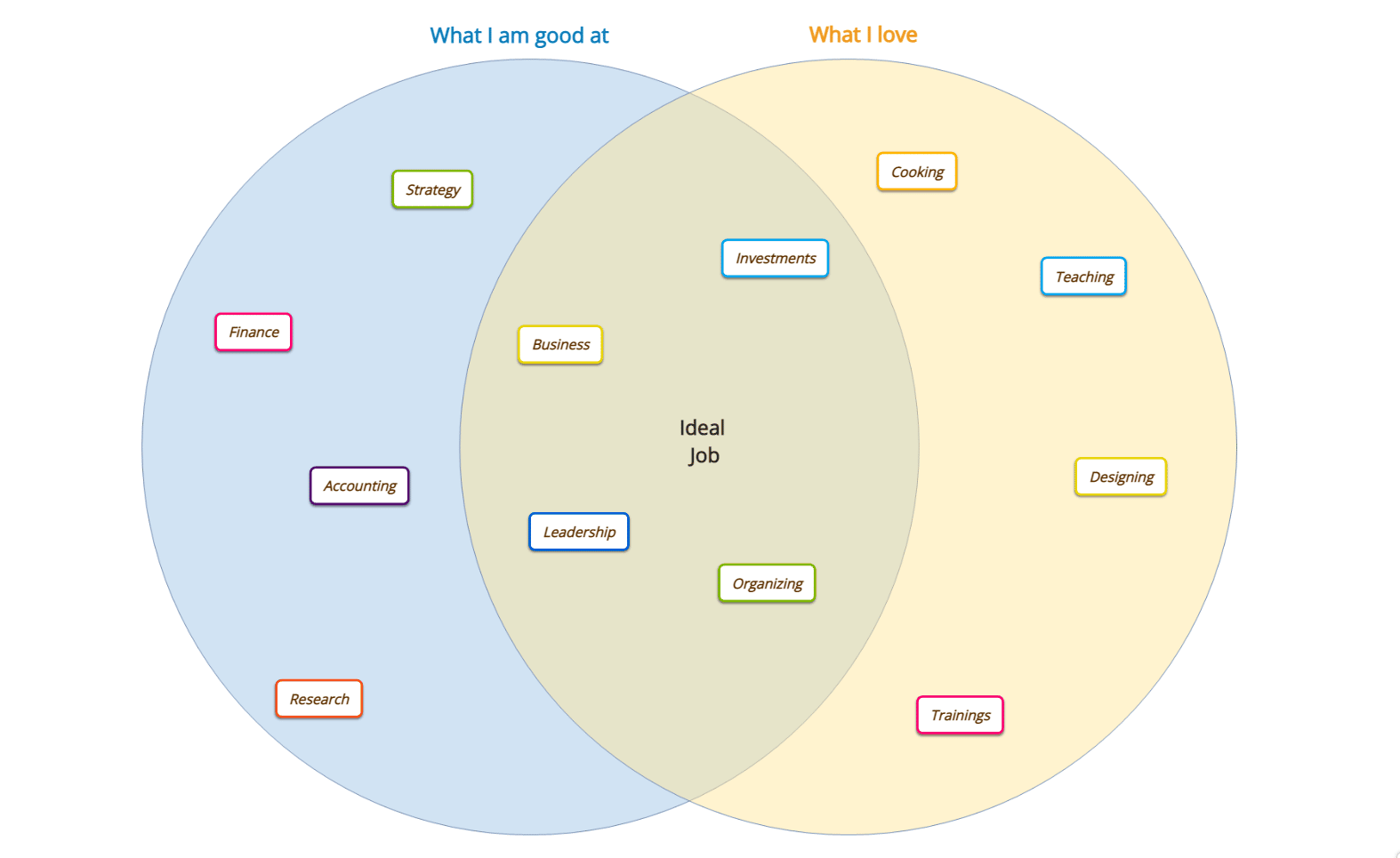
Venn diagrams are fantastic at getting to the root of the solution. Whereas bubble maps expand outwards, Venn diagrams make us look inwards. They are meant to help with decision-making and create concept maps of our thoughts. A good Venn Diagram can have as many circles as needed.
All the elements and different variables only help to build out a refined answer in the center. It’s also not about finding one answer but building out a visual strategy on what action to take. See more Venn diagram examples.
Hierarchal display semantic maps
Most people will see this type of visual display when it comes to common graphic organizers. No, this is not meant to be an organizational chart, but it is similar in concept. These types of concept maps help build a lot of data and compile them into words they read.
It’s meant to simplify many of these words and can help with or without prior knowledge of a topic. Using this type of semantic map is one of the simpler teaching strategies as well. For example, you can use the animal kingdom as a typical hierarchal type of semantic map. You can also use it to list what you have prior knowledge of, such as dog breeds.
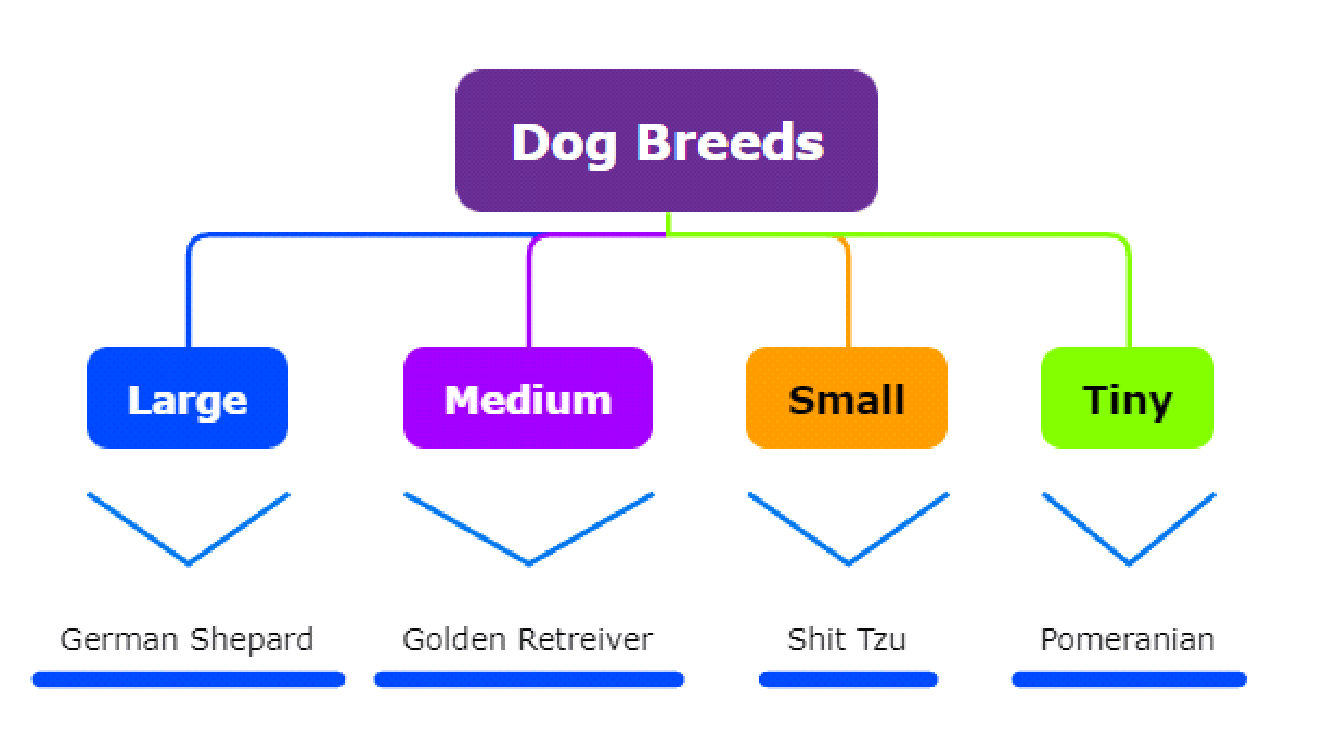
These are one of the more flexible options when it comes to graphic organizers. Putting the concept on top and refining it as we get down the list is where its usefulness lies.
Is it hard to learn how to use semantic maps?
Regardless of the difficulty, it’s important to learn how to use various types of semantic maps. This is a key part of early education, especially with children. It’s not enough for children to learn the words they read but to relate them to concepts. It’s the basis for critical thinking, and graphical organizers such as a semantic map help to do that.
The difficulty is only at the beginning when trying to understand how to organize everything. This is akin to organizing one’s thoughts and putting them into a visual display. With practice, this becomes second nature and a critical toolset in all facets of life. It will help with continuous education and support concepts in the workplace. Don’t ignore that a semantic map and its iterations will help collect ideas and centralize them in one place.
Also, don’t just write them down or use unsophisticated drawing software when you create a semantic map. You want to use dedicated graphical organizers that only focus on making the best visual representations. You also want this type of software, so it’s easy to publish and share with others. Software such as Mindomo is available to use to practice with various templates and you can build a mind map app and a variety of semantic maps and other visual representations.
All of this is offered free of charge to try out a few templates. You’ll also get access to all the templates to practice with, and when ready, you can upgrade. An upgrade will include unlimited diagrams, semantic maps, organizational charts, and mind maps that you can think of.
Keep it smart, simple, and creative!
The Mindomo Team


